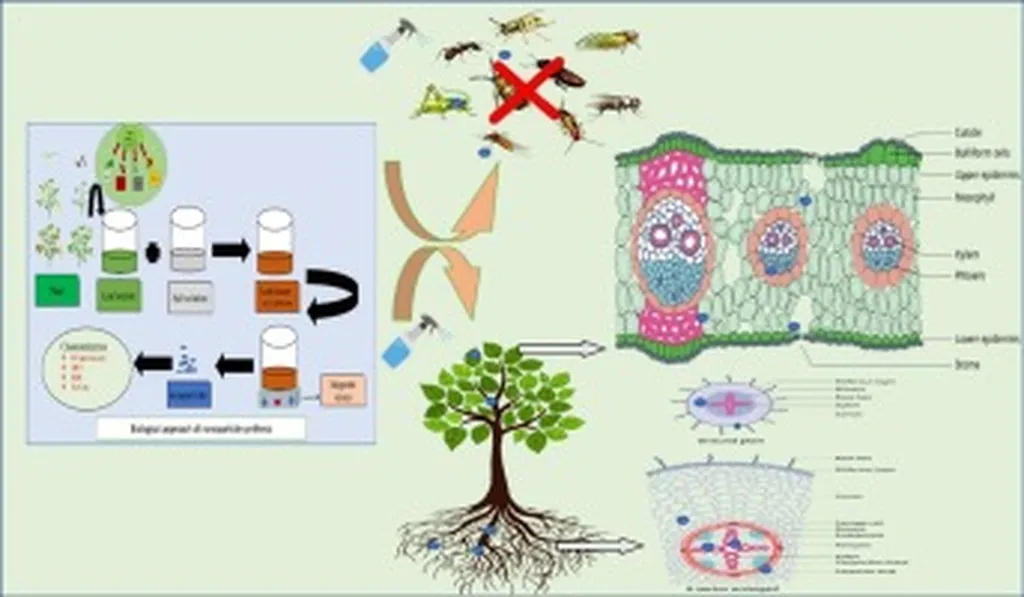In the quest for sustainable agriculture, researchers are turning to an unlikely ally: nanoparticles synthesized from plants. A recent review published in *Plant Stress* sheds light on the promising role of phytogenic nanoparticles in crop protection, offering a greener alternative to conventional chemical pesticides. The study, led by Gunasekaran Yazhini from the Department of Environmental Sciences at TNAU in Coimbatore, Tamil Nadu, India, explores how these biologically synthesized nanoparticles could revolutionize pest management while minimizing environmental harm.
The increasing reliance on chemical pesticides has led to a host of problems, including insect resistance, harm to non-target species, and ecological imbalances. “The need for eco-friendly alternatives has never been more urgent,” Yazhini notes. Phytogenic nanoparticles, produced using plant extracts, offer a novel solution. These nanoparticles not only exhibit strong insecticidal and antimicrobial properties but also require lower dosages compared to their chemically produced counterparts, thanks to the synergistic effects of phytochemicals.
The review outlines various strategies for the green production and physicochemical characterization of these nanoparticles. It delves into their modes of action, which include physical disruption of pest cells, generation of reactive oxygen species (ROS), metabolic disruption, and reproductive inhibition. “The mechanisms by which these nanoparticles work are multifaceted and highly effective,” Yazhini explains. This multifaceted approach could potentially lead to more sustainable and efficient pest management practices.
One of the key findings of the review is the enhanced bioefficacy of biogenically capped nanoparticles. These nanoparticles often demonstrate superior performance compared to chemically produced alternatives, making them an attractive option for farmers looking to reduce their reliance on harmful chemicals. The study also evaluates various efficacy parameters, such as LC₅₀ (lethal concentration for 50% of the test population), anti-feedant activity, fecundity, and enzymatic markers, providing a comprehensive overview of their potential applications in both field and storage pest management.
However, the review also highlights significant gaps in the current research. There is a lack of standardization in the synthesis and characterization of these nanoparticles, as well as insufficient field-scale and long-term ecotoxicity testing. “We need more standardized testing and mechanistic studies to fully understand the potential of these nanoparticles,” Yazhini emphasizes. Additionally, there is a need for safe-by-design nano formulations and life-cycle assessments to ensure the responsible translation of green nanotechnologies to sustainable pest management.
The commercial implications of this research are substantial. The global agricultural sector stands to benefit greatly from the development of eco-friendly pest management solutions. Phytogenic nanoparticles could offer a cost-effective and sustainable alternative to traditional pesticides, reducing the environmental impact of agriculture while improving crop yields. The review proposes a roadmap for future research and regulation, emphasizing the need for standardized testing, mechanistic studies, and safe-by-design nano formulations.
As the agricultural industry continues to evolve, the integration of green nanotechnologies could play a pivotal role in shaping the future of sustainable farming. The research led by Gunasekaran Yazhini and published in *Plant Stress* provides a crucial stepping stone in this direction, offering valuable insights into the potential of phytogenic nanoparticles for crop protection. With further research and development, these nanoparticles could become a cornerstone of sustainable agriculture, benefiting farmers, consumers, and the environment alike.

